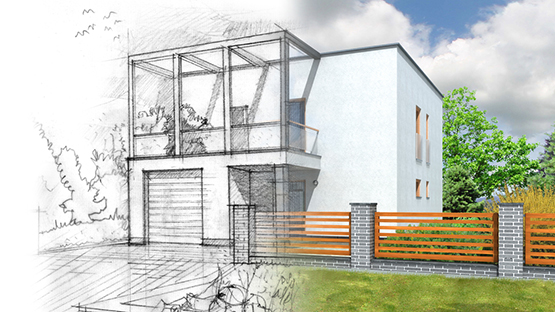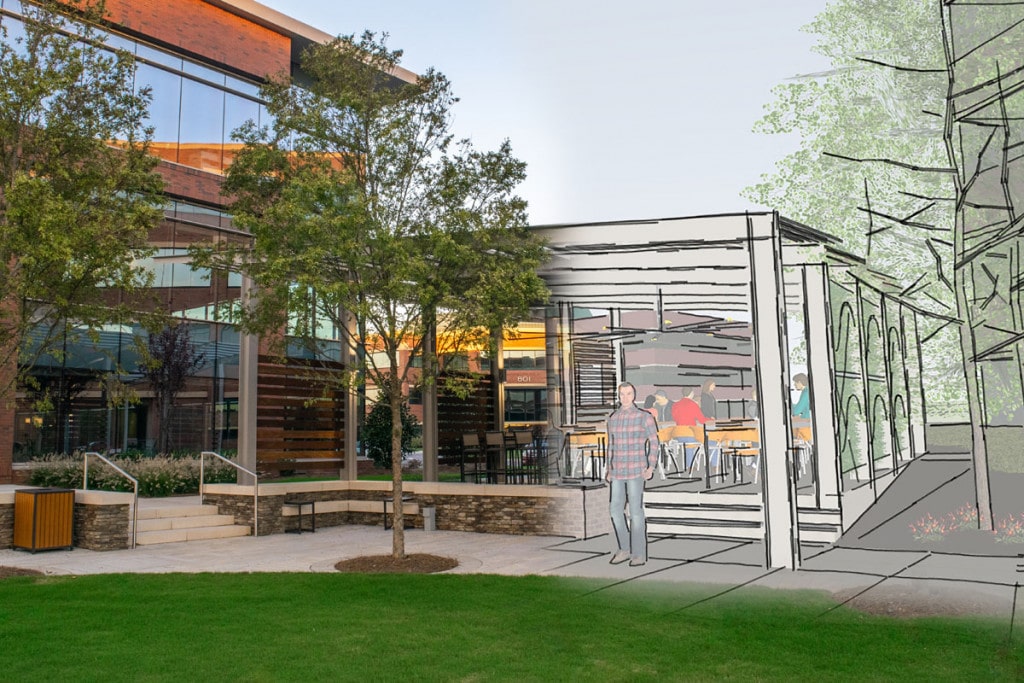Discover Ingenious Designs with Leading CDA Architects for Your Next Job
Wiki Article
The Impact of Technological Developments on the Style Practices of Contemporary Architects
The rapid development of technological devices has actually dramatically reshaped the style landscape for contemporary architects, promoting unmatched levels of technology and sustainability. The integration of Structure Details Modeling (BIM), parametric style, and expert system has not just structured cooperation among varied teams yet likewise redefined project execution. However, as engineers accept these developments, they are faced with complicated obstacles that might influence their creative processes. Checking out these dynamics reveals a nuanced interaction in between modern technology and traditional design methods, prompting a closer evaluation of what the future holds for building techniques.Advancement of Architectural Equipment
How have building devices changed the layout and building and construction processes over the centuries? The advancement of building tools has dramatically influenced the effectiveness, precision, and creative thinking of layout and building. In ancient times, architects count on basic instruments such as plumb bobs, gauging poles, and fundamental geometry to produce frameworks. These devices laid the structure for early building method, allowing for the building and construction of legendary structures, albeit with restrictions in accuracy and intricacy.With the advent of the Renaissance, the introduction of the compass and the protractor noted an essential change. These devices allowed engineers to achieve greater precision in their designs, assisting in the development of more complex and proportional buildings. The Industrial Transformation additionally revolutionized architectural experiment the introduction of mechanized tools and products, enabling larger and more ambitious tasks.
In the 20th century, the development of computer-aided design (CAD) software transformed the landscape once again, providing architects with unmatched capacities in modeling and visualization. Today, advanced devices such as Building Info Modeling (BIM) and parametric style software continue to push the boundaries of architectural technology, enabling a more integrated approach to design and building procedures.
Boosted Partnership in Design
As innovation proceeds to evolve, improved cooperation in layout has actually become a foundation of modern-day building technique. The integration of electronic tools such as Structure Info Modeling (BIM), cloud-based platforms, and advanced visualization software application has changed the method engineers, designers, and stakeholders connect throughout the design procedure. These devices help with real-time interaction, enabling groups to share concepts, modifications, and feedback instantly, no matter of geographical place.
In addition, interdisciplinary collaboration has been streamlined with these technological innovations, enabling architects to function much more very closely with various other experts, such as metropolitan planners and ecological specialists. The result is an extra natural technique to design that thinks about various viewpoints and expertise. Inevitably, enhanced see here now partnership in layout is not simply a trend; it is crucial for creating cutting-edge, useful, and visually pleasing design read this article in an increasingly intricate world.
Sustainability With Technology
Sustainability in design has significantly come to be intertwined with technical development, driving the sector toward environmentally accountable methods - cda architects. Contemporary engineers are leveraging advanced innovations to minimize ecological influence while boosting the efficiency of buildings. One famous instance is the usage of Structure Info Modeling (BIM), which enables for specific preparation and source allotment, decreasing waste throughout building and construction and advertising energy efficiency throughout a building's lifecycleFurthermore, smart materials and energy-efficient systems are being integrated right into layouts to optimize source use. Technologies such as solar batteries and green roof harness eco-friendly energy resources, contributing to minimized carbon footprints. Additionally, the application of expert system in style procedures enables architects to mimic and examine energy usage, leading decisions toward more lasting end results.
The assimilation of lasting modern technologies not just aligns with global environmental goals however additionally satisfies an enhancing demand from customers for environmentally friendly solutions. As engineers welcome these advancements, the focus changes in the direction of developing areas that are not only aesthetically pleasing yet likewise functionally lasting, therefore redefining the requirements of contemporary architecture. In this means, innovation works as a catalyst for sustainability, enabling designers to develop buildings that regard and enhance the natural surroundings.
Difficulties in Implementation
While technical improvements in design hold great pledge for improving sustainability, their implementation typically encounters significant obstacles - cda architects. One primary barrier is the steep discovering curve associated with go to this website new innovations. Engineers and construction experts may need comprehensive training to successfully utilize innovative software application and tools, which can delay job timelines and increase costsFurthermore, the integration of arising technologies, such as Building Information Modeling (BIM) and sustainable materials, commonly demands cooperation across multidisciplinary teams. This collaboration can be prevented by differences in knowledge, operations, and communication styles, leading to prospective conflicts and ineffectiveness.
Financial restraints even more complicate the adoption of ingenious technologies. Several architectural companies, especially smaller sized ones, might lack the resources to spend in sophisticated devices, restricting their capability to take on larger companies that can afford such investments.
Moreover, regulatory frameworks and building regulations may not equal technical developments, producing obscurity and possible conformity problems. This obstacle can discourage engineers from totally accepting new modern technologies, as the risk of non-compliance might outweigh the benefits. Resolving these execution challenges is vital for the successful combination of technical improvements in contemporary architectural techniques.
Future Fads in Style
The challenges connected with the application of brand-new innovations in style have actually motivated a reevaluation of future trends within the industry. As engineers browse concerns such as sustainability, urbanization, and social equity, they are increasingly taking on innovative modern technologies to enhance layout effectiveness and environmental efficiency.One prominent pattern is the integration of man-made intelligence (AI) in the style process. AI tools can assess substantial datasets to inform layout decisions, boosting both creative thinking and capability. In A Similar Way, Building Info Modeling (BIM) remains to develop, allowing real-time partnership among stakeholders and facilitating streamlined task management.
Lasting style practices are additionally acquiring momentum, with designers concentrating on flexible reuse and regenerative layout concepts that decrease source usage and waste. The incorporation of smart materials and renewable resource resources will further improve the durability of buildings in the face of climate modification.

Final Thought
Technical innovations have dramatically improved building design methods, helping with improved precision, partnership, and sustainability. The assimilation of tools such as Structure Info Modeling and parametric design software, together with expert system and wise materials, equips engineers to address complex obstacles more properly. While execution may offer particular obstacles, the continued advancement of these modern technologies guarantees to drive technology in architecture. Future trends will likely additionally emphasize sustainability and performance, eventually redefining the constructed setting.Report this wiki page